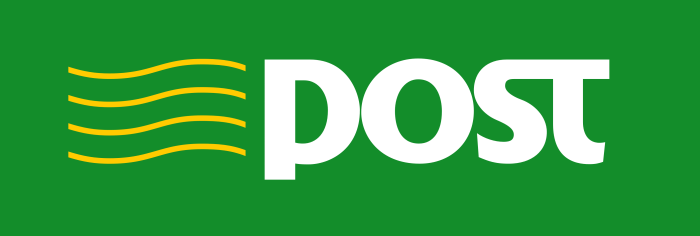Digestive problems after gallbladder removal are a common concern for patients. This comprehensive guide delves into the potential issues, symptoms, diagnoses, treatments, and dietary considerations. Understanding the physiological changes and potential complications following cholecystectomy is crucial for effective management.
The gallbladder plays a vital role in the digestion of fats. When it’s removed, the body must adapt, and this can lead to a range of digestive symptoms. This article explores the various types of digestive problems, their causes, and how they might manifest in different individuals.
Introduction to Digestive Issues Post-Cholecystectomy
The gallbladder, a small, pear-shaped organ located beneath the liver, plays a crucial role in fat digestion. It stores bile, a fluid produced by the liver, which helps break down fats in the small intestine. Cholecystectomy, the surgical removal of the gallbladder, is a common procedure often performed for gallstones. While generally a safe and effective treatment, it can sometimes lead to various digestive issues.Post-cholecystectomy, the body undergoes physiological adjustments.
The absence of the gallbladder alters the way bile is released into the small intestine. This change can lead to a range of digestive problems, varying in severity and duration for different individuals. Understanding these potential issues is crucial for patients to recognize and address them promptly.
Potential Physiological Changes After Cholecystectomy
The gallbladder’s absence disrupts the normal flow of bile. Bile is now secreted directly into the small intestine, without the gallbladder’s role in concentrating it. This can lead to fluctuations in bile composition and volume, which can affect digestion. The absence of the gallbladder’s storage function also means bile is released more continuously, instead of in concentrated bursts.
Range of Digestive Problems
The altered bile flow and composition can manifest in various digestive problems. These issues can range from mild discomfort to more severe conditions, requiring medical intervention. The most common problems include issues with fat digestion, which can lead to digestive upset.
Common Symptoms Associated with Digestive Problems, Digestive problems after gallbladder removal
Symptoms of digestive problems post-cholecystectomy can vary. Some patients experience mild discomfort, while others may have more significant symptoms. These symptoms may include abdominal pain, nausea, diarrhea, bloating, and gas. The intensity and frequency of these symptoms can differ considerably among individuals.
Table of Potential Digestive Issues and Symptoms
| Digestive Issue | Common Symptoms |
|---|---|
| Fat Malabsorption | Abdominal pain, particularly after fatty meals; diarrhea, greasy stools, bloating, and gas. |
| Bile Acid Diarrhea | Loose, watery stools, especially after meals; cramping abdominal pain, and gas. |
| Post-Cholecystectomy Syndrome | Abdominal pain, bloating, nausea, vomiting, and indigestion, often occurring unpredictably. |
| Dyspepsia | Upper abdominal discomfort, fullness, bloating, and nausea, usually occurring after meals. |
| Gallstone-related complications | Painful spasms in the upper right abdomen, often radiating to the back or shoulder; fever and chills; vomiting. |
Types of Digestive Problems: Digestive Problems After Gallbladder Removal
Post-cholecystectomy, patients may experience a range of digestive issues. These complications arise from the altered digestive environment and the potential for functional changes in the biliary and gastrointestinal systems. Understanding the various types of problems, their causes, and how they manifest can help patients and healthcare providers manage these issues effectively.The gallbladder’s primary role is bile storage and concentration.
After its removal, the body must adjust to a continuous flow of bile into the small intestine, potentially leading to varying digestive responses. The digestive system is intricate, and disruptions in any part can affect the whole process.
Dealing with digestive issues after gallbladder removal can be tricky, and honestly, it’s a common complaint. While it’s not directly related, new research into cancer rates over time here highlights the importance of ongoing health monitoring. This underscores the need to stay proactive and communicative with your doctor about any lingering digestive problems, even if they seem minor, after this surgery.
It’s crucial to ensure your recovery is as smooth as possible.
Common Digestive Problems
Various digestive problems can occur after gallbladder removal. These issues often stem from bile’s altered flow and interaction with the digestive tract. Understanding the specific nature of these problems is crucial for effective management and treatment.
- Bile reflux: This occurs when bile flows back up the bile ducts, potentially irritating the stomach and duodenum. This reflux can lead to heartburn, nausea, and abdominal pain, especially after meals. Patients might also experience a bitter taste in their mouth. Some may experience episodes of significant discomfort. For example, one patient might report consistent, mild heartburn after eating fatty foods, while another might experience intense pain and nausea after consuming greasy foods.
- Dyspepsia: This encompasses a group of upper abdominal symptoms like discomfort, bloating, nausea, or fullness after eating. It can stem from several factors, including altered bile flow, increased gastric acid production, or changes in intestinal motility. The intensity of symptoms can vary greatly, from mild indigestion to severe pain, depending on the underlying cause. Dyspepsia can be mistaken for other conditions, making accurate diagnosis crucial.
For instance, a patient might experience intermittent bloating after meals, while another might suffer from constant upper abdominal pain and fullness.
- Fatty food intolerance: The gallbladder stores and concentrates bile, which aids in the digestion of fats. Without the gallbladder, the body struggles to process fatty foods efficiently. This can result in bloating, abdominal cramps, diarrhea, and a feeling of fullness after eating fatty meals. Some patients might have trouble digesting fried foods or rich desserts. For example, a patient might experience severe cramping and diarrhea after eating a large portion of pizza, while another might just feel excessively full after a meal high in fat.
Potential Causes of Digestive Problems
The causes of these digestive issues are multifaceted and can often be interconnected. The removal of the gallbladder alters the normal digestive process, which can lead to several complications.
- Altered bile flow: The absence of the gallbladder disrupts the normal flow of bile. Bile, essential for fat digestion, is released continuously into the small intestine instead of being concentrated and released in response to meals. This continuous release can lead to bile reflux, causing irritation and discomfort.
- Changes in intestinal motility: The digestive tract’s motility, or movement, might be affected by the absence of the gallbladder. This can result in changes in the rate of digestion and absorption, potentially leading to dyspepsia and other digestive problems. For example, some patients may experience faster transit times, resulting in diarrhea.
- Dietary factors: The types and amounts of foods consumed can significantly influence the severity and frequency of digestive issues. High-fat meals often trigger discomfort and intolerance in patients without gallbladders. The patient’s diet can either alleviate or worsen the issue.
Comparison of Digestive Disorders
Different digestive disorders, although related to the digestive process, have distinct characteristics.
Dealing with digestive issues after gallbladder removal can be tricky, and honestly, it’s a whole new ballgame. Adjusting to a different way of digesting food is a real adjustment, and it’s something I’ve been thinking about a lot lately. It’s a bit like living with a pacemaker, requiring careful attention to dietary changes and lifestyle adjustments. This ongoing process of adaptation and finding what works best for my body is crucial for overall well-being, and it’s something I’m actively researching and exploring.
It’s all part of learning how to manage these digestive changes and making sure I’m taking the best possible care of myself after gallbladder removal. living with a pacemaker This journey to understanding my body’s needs is important to ensure long-term health.
| Digestive Problem | Potential Causes | Manifestations |
|---|---|---|
| Bile reflux | Altered bile flow, impaired sphincter function | Heartburn, nausea, abdominal pain, bitter taste |
| Dyspepsia | Altered bile flow, gastric acid production, intestinal motility | Discomfort, bloating, nausea, fullness |
| Fatty food intolerance | Insufficient bile for fat digestion | Bloating, cramps, diarrhea, fullness |
Symptoms and Diagnosis
Post-cholecystectomy digestive issues can manifest in a variety of ways, making accurate diagnosis crucial for effective management. Understanding the potential symptoms and the diagnostic methods employed by healthcare professionals is essential for patients to advocate for their well-being. The journey to identifying the root cause of these issues often involves a combination of patient history, physical examination, and various diagnostic tests.
Symptom Presentation
A wide range of symptoms can arise following gallbladder removal. These symptoms are not always directly related to the gallbladder’s absence but can be triggered by various digestive issues. Common symptoms include abdominal pain, bloating, nausea, and diarrhea, but the experience can vary greatly from person to person. Some individuals may experience persistent discomfort, while others may encounter intermittent episodes of distress.
- Abdominal pain: This can range from mild discomfort to severe cramping, often localized in the upper right or mid-abdomen. The pain can be sharp, dull, or aching, and its intensity can fluctuate over time.
- Bloating and fullness: A feeling of distention or pressure in the abdomen after eating can occur, leading to discomfort and potentially nausea.
- Nausea and vomiting: These are common symptoms that can be triggered by food or other factors. The severity and frequency of nausea and vomiting can vary significantly.
- Diarrhea or constipation: Changes in bowel habits, such as increased frequency or difficulty with bowel movements, are possible. Some patients experience diarrhea, while others experience constipation.
- Fatty food intolerance: Difficulty digesting fatty foods can manifest as abdominal pain, bloating, nausea, and diarrhea. This symptom is frequently observed in the post-cholecystectomy period.
- Heartburn or indigestion: These symptoms, often characterized by a burning sensation in the chest or upper abdomen, can also occur.
Diagnostic Methods
Accurate diagnosis involves a multi-faceted approach. Healthcare professionals use a combination of methods to determine the underlying cause of post-cholecystectomy digestive issues.
- Medical history: A detailed medical history is crucial for understanding the patient’s overall health, including any pre-existing conditions, medications, and dietary habits. A detailed history of symptoms, their duration, frequency, and triggers helps in forming a comprehensive picture.
- Physical examination: A thorough physical examination of the abdomen, including palpation (feeling) for tenderness or abnormalities, can provide valuable information. Healthcare professionals assess for signs of inflammation or other physical clues.
- Blood tests: Blood tests can help identify inflammation markers, such as C-reactive protein (CRP), or assess liver function. These tests can provide insights into the potential presence of other underlying conditions.
- Imaging studies: Imaging techniques, such as ultrasound or CT scans, can visualize the organs of the digestive system. These images can identify blockages, gallstones, or other abnormalities.
- Endoscopy: Procedures like endoscopy (using a flexible tube with a camera) can allow direct visualization of the upper digestive tract. This can help identify ulcers, inflammation, or other abnormalities in the esophagus, stomach, or duodenum.
- Endoscopic ultrasound: Endoscopic ultrasound combines the capabilities of both endoscopy and ultrasound. It provides a detailed view of the digestive tract structures, including the pancreas and bile ducts.
Differentiating Post-Cholecystectomy Issues from Other Conditions
Distinguishing post-cholecystectomy digestive issues from other conditions requires careful consideration. Symptoms can overlap, making differentiation challenging. The history of gallbladder removal is essential for distinguishing the issues from other problems that can cause similar symptoms.
| Diagnostic Step | Associated Tests |
|---|---|
| Medical History | Patient interview, review of previous medical records |
| Physical Examination | Abdominal palpation, assessment of vital signs |
| Blood Tests | Complete blood count (CBC), liver function tests (LFTs), C-reactive protein (CRP) |
| Imaging Studies | Ultrasound, CT scan, MRI |
| Endoscopy | Esophagogastroduodenoscopy (EGD), endoscopic retrograde cholangiopancreatography (ERCP) |
Role of Medical History and Physical Examination
A comprehensive medical history and physical examination are fundamental to the diagnostic process. A detailed history, including the timing of the gallbladder removal, the duration and nature of symptoms, and any associated factors, is invaluable. The physical examination allows for assessment of the abdomen for tenderness, distention, or other abnormalities, aiding in the identification of potential causes.
Management and Treatment
Navigating the digestive landscape after gallbladder removal can feel like charting uncharted territory. Understanding the various management strategies and treatment options available is crucial for a smooth recovery and long-term well-being. This section will explore the methods for managing post-cholecystectomy digestive issues, including medical interventions, dietary modifications, and the importance of patient-doctor communication.
Medical Interventions
Effective management of post-cholecystectomy digestive issues often involves a combination of approaches. Medical interventions play a significant role in addressing symptoms and improving overall comfort. These interventions can range from over-the-counter medications to more complex procedures.
- Over-the-counter medications, such as antacids and anti-diarrheal medications, can provide temporary relief from mild digestive discomfort. These are often helpful for managing occasional symptoms like heartburn or bloating.
- Prescription medications, including bile acid sequestrants, can help manage persistent or severe symptoms. These medications work by altering the way the body processes bile acids, which can reduce the frequency and intensity of digestive issues. For instance, cholestyramine can help reduce diarrhea and bloating in some individuals.
- In cases where symptoms are severe or persistent, or if other underlying conditions are suspected, referral to a gastroenterologist may be necessary. A gastroenterologist can conduct more extensive diagnostic tests and potentially prescribe more potent medications or explore other treatment options, such as medication to address motility issues. For example, a gastroenterologist might prescribe medications to regulate gut motility if constipation or diarrhea are significant problems.
Dietary Modifications
Dietary adjustments can significantly impact the management of digestive problems after gallbladder removal. A well-planned diet can minimize discomfort and promote healing.
- A low-fat diet is often recommended. Reducing dietary fat intake allows the digestive system to better process food, reducing the likelihood of digestive discomfort. This often involves avoiding fried foods, fatty meats, and high-fat dairy products.
- Consuming smaller, more frequent meals can be beneficial. This approach can help prevent digestive overload and reduce the risk of bloating or discomfort. For example, eating six small meals a day instead of three large meals can help.
- Staying hydrated is essential. Adequate fluid intake supports digestion and can help prevent constipation. Drinking plenty of water throughout the day is important.
Comparison of Treatment Approaches
Different treatment approaches offer varying degrees of effectiveness. The best approach often depends on the individual’s specific symptoms and the underlying cause of the digestive issues. For example, a patient experiencing mild bloating might find relief with over-the-counter antacids, while someone with persistent diarrhea might require more targeted medication and dietary adjustments.
Treatment Options Summary
| Treatment Option | Potential Side Effects |
|---|---|
| Over-the-counter antacids | Mild gastrointestinal upset, occasional constipation or diarrhea. |
| Prescription bile acid sequestrants | Constipation, gas, bloating, and occasionally, mild abdominal discomfort. |
| Dietary modifications (low-fat, small meals, hydration) | Potential for nutrient deficiencies if not carefully planned, or limited food choices. |
| Medication for motility issues | Potential side effects vary based on the specific medication, including nausea, vomiting, and changes in bowel habits. |
Dietary Recommendations and Lifestyle Changes
Navigating the world of post-cholecystectomy digestion often requires a personalized approach to dietary choices. Understanding how different foods impact your system and making conscious lifestyle adjustments can significantly improve your comfort and overall well-being. This section delves into tailored dietary recommendations, symptom management strategies, and the importance of mindful eating.
Dietary Recommendations for Post-Cholecystectomy Patients
Post-cholecystectomy, the gallbladder’s absence can affect how your body processes fats. This requires careful attention to dietary choices. Adjusting your diet to accommodate this change can prevent discomfort and promote better digestion.
Managing Specific Symptoms
Managing symptoms like bloating and diarrhea after gallbladder removal is crucial for a comfortable recovery. Strategies for managing these specific symptoms involve understanding their triggers and making appropriate dietary adjustments.
Managing Bloating
Bloating is a common post-cholecystectomy concern. Dietary changes, such as reducing gas-producing foods and increasing fiber intake gradually, can help manage bloating. High-fiber foods should be introduced gradually to avoid unexpected digestive responses.
Managing Diarrhea
Diarrhea can result from changes in digestion after gallbladder removal. Strategies to manage diarrhea include avoiding trigger foods and maintaining a consistent fluid intake. Keeping a food diary can help identify trigger foods, which can then be eliminated from the diet.
Mindful Eating and Portion Control
Mindful eating and portion control are key components of successful post-cholecystectomy dietary management. Paying attention to hunger and fullness cues, as well as eating slowly and mindfully, can help prevent overeating and subsequent digestive distress. This approach fosters a more harmonious relationship with food, ultimately benefiting your overall digestive health.
Impact of Different Food Types on Digestion
Different food types have varying effects on digestion after gallbladder removal. Fatty foods, for instance, can be more difficult to digest, potentially leading to discomfort or diarrhea. This requires adjustments to reduce the intake of fatty foods, such as those high in saturated and trans fats.
Dietary Guidelines and Food Recommendations
This table summarizes dietary guidelines and examples of foods to include or avoid after gallbladder removal.
| Category | Foods to Include | Foods to Avoid |
|---|---|---|
| Fats | Healthy fats like avocados, nuts, and olive oil (in moderation) | Fried foods, fatty meats, and processed foods high in saturated and trans fats |
| Fiber | Fruits, vegetables, and whole grains (gradually increase fiber intake) | Foods high in insoluble fiber that could cause excessive gas or bloating (start with low fiber intake) |
| Protein | Lean proteins like fish, poultry, and beans | Processed meats and high-fat cuts of meat |
| Hydration | Water, clear broths, and other non-caffeinated beverages | Sugary drinks and alcohol |
| Other | Small, frequent meals, and chewing food thoroughly | Spicy foods, and foods containing high amounts of sugar or salt |
Potential Complications and Prognosis
Post-cholecystectomy digestive issues, while often manageable, can sometimes lead to complications. Understanding these potential problems and their likelihood is crucial for patients and healthcare providers to develop effective strategies for preventing and managing them. Careful monitoring and proactive management are key to achieving a positive long-term outcome.Unfortunately, despite successful gallbladder removal, some individuals experience persistent or recurring digestive problems that can significantly impact their quality of life.
These issues can stem from various factors, including the individual’s pre-existing conditions, the surgical procedure itself, or the body’s response to the absence of the gallbladder. A comprehensive understanding of potential complications is essential for effective patient care.
Dealing with digestive issues after gallbladder removal can be tricky, and finding the right approach to manage them is key. Sometimes, a change in treatment for other health conditions, like switching psoriatic arthritis treatment, can surprisingly impact digestion. For example, adjusting medication for psoriatic arthritis might be part of a broader plan to help with those post-surgery digestive issues.
So, if you’re experiencing these problems, don’t hesitate to explore all avenues for relief, including exploring options like switch psoriatic arthritis treatment , in consultation with your doctor.
Potential Complications
The absence of the gallbladder, while crucial for preventing gallstones, can sometimes lead to adjustments in how the body processes bile. This can create conditions where the digestive system struggles to effectively break down fats. This can lead to a range of complications, some minor and others more significant.
- Pancreatitis: Inflammation of the pancreas can occur due to the altered bile flow. Symptoms may include severe abdominal pain, nausea, and vomiting. This can range from mild discomfort to a severe medical emergency requiring hospitalization.
- Biliary strictures: Scarring or narrowing of the bile ducts can impede the flow of bile. This can result in jaundice (yellowing of the skin and eyes), abdominal pain, and in severe cases, require surgical intervention.
- Gallstone formation in the common bile duct (CBD): Although the gallbladder is removed, gallstones can still form in the common bile duct, potentially causing blockage and pain. A cholecystectomy does not eliminate the risk of gallstones in other parts of the biliary system.
- Small intestinal bacterial overgrowth (SIBO): The absence of the gallbladder can alter the intestinal environment, sometimes leading to an overgrowth of bacteria in the small intestine. This can cause symptoms such as bloating, gas, diarrhea, and abdominal discomfort.
- Post-cholecystectomy syndrome (PCS): This encompasses a group of symptoms that persist or recur after gallbladder removal. These symptoms are not necessarily caused by gallstones, but rather by issues in the biliary system or other parts of the digestive tract. Pain, bloating, nausea, and indigestion are common complaints.
Long-Term Prognosis
The long-term prognosis for individuals experiencing digestive issues after cholecystectomy varies greatly depending on the specific complication, its severity, and the effectiveness of treatment. In many cases, individuals can lead fulfilling lives with proper management and lifestyle adjustments. However, some complications can lead to chronic conditions requiring ongoing medical attention.
- Early intervention is key: Prompt diagnosis and treatment of complications can significantly improve the long-term prognosis. Early detection allows for targeted therapies and reduces the risk of severe complications.
- Individual variability: The impact of digestive issues on overall well-being is highly variable between individuals. Some experience only mild discomfort, while others face more significant challenges.
- Follow-up care: Regular follow-up appointments with a healthcare provider are essential to monitor symptoms, adjust treatment plans, and address any emerging concerns.
Prevalence and Severity of Complications
Data on the precise prevalence and severity of post-cholecystectomy complications is somewhat varied, as different studies use different methodologies and criteria for diagnosis. However, research consistently indicates that a significant percentage of individuals experience some form of post-surgical digestive issues. The severity of complications can vary considerably, from mild discomfort to potentially life-threatening situations.
Potential Complications Table
| Potential Complication | Likelihood (estimated) | Associated Treatments |
|---|---|---|
| Pancreatitis | Moderate | Pain management, IV fluids, medication to control inflammation |
| Biliary strictures | Low | Medical management, endoscopic procedures, surgical intervention in severe cases |
| Gallstone formation in the CBD | Low to Moderate | Endoscopic procedures to remove gallstones, medications to manage symptoms |
| SIBO | Low | Dietary modifications, antibiotics, probiotics |
| Post-cholecystectomy syndrome | Moderate | Dietary changes, medications to manage symptoms, psychological support |
Patient Education and Support
Navigating digestive issues after gallbladder removal can be challenging. Understanding the nature of these problems, how to manage them, and the importance of ongoing support is crucial for a smoother recovery and improved quality of life. This section delves into the critical aspects of patient education and support systems, empowering you to take control of your health journey.Post-cholecystectomy digestive problems often require a proactive approach.
Patient education plays a vital role in equipping individuals with the knowledge and tools needed to effectively manage these issues. A strong support system, whether through formal groups or online communities, can significantly impact emotional well-being and provide valuable insights.
Importance of Patient Education
Effective patient education empowers individuals to actively participate in their healthcare. It equips them with the knowledge necessary to understand their condition, anticipate potential challenges, and make informed decisions regarding their treatment and lifestyle. Comprehensive education should cover the specifics of their condition, potential symptoms, and available management strategies. This fosters a partnership between the patient and healthcare provider, allowing for more effective communication and shared decision-making.
Role of Support Groups and Online Resources
Support groups provide a platform for individuals to connect with others facing similar challenges. Sharing experiences, coping mechanisms, and advice fosters a sense of community and belonging. Online resources, including forums and websites dedicated to digestive health, offer readily available information, support, and encouragement. These resources can be invaluable for accessing diverse perspectives and practical tips from fellow patients.
Coping with Emotional and Psychological Aspects
Experiencing digestive issues can evoke a range of emotions, including anxiety, frustration, and even depression. Recognizing these emotional responses and developing healthy coping mechanisms is essential. Seeking support from mental health professionals, engaging in relaxation techniques, and maintaining a positive outlook can be instrumental in managing the psychological impact of these challenges. It’s crucial to acknowledge that emotional well-being is as important as physical well-being in the recovery process.
Effective Communication with Healthcare Providers
Open and honest communication with healthcare providers is essential for optimal management of digestive problems. Patients should clearly articulate their symptoms, concerns, and treatment preferences. Keeping detailed records of symptoms, medication side effects, and dietary changes can aid in diagnosis and treatment planning. This collaborative approach fosters a trusting relationship and enables healthcare providers to tailor the best course of action.
Examples include proactively scheduling appointments, asking clarifying questions, and taking detailed notes from consultations.
Resources for Patient Support and Education
| Resource Type | Description | Contact Information/Website |
|---|---|---|
| Support Groups (Local) | Facilitated by healthcare professionals or patient advocates, these groups offer peer support and educational sessions. | Local hospitals, community centers, or online directories. |
| Online Forums/Communities | Connect with other patients, share experiences, and access information. | Various online platforms like Reddit, patient advocacy groups. |
| Patient Advocacy Organizations | Organizations dedicated to raising awareness and providing support to patients. | Search online for national/international organizations focusing on digestive health. |
| Healthcare Provider Websites | Many healthcare providers maintain informative websites that offer general and specific information on digestive health and post-cholecystectomy care. | Individual provider websites. |
| Educational Materials | Brochures, pamphlets, or online articles from medical institutions and reputable organizations. | Hospital websites, health libraries, and health professional associations. |
Illustrative Case Studies

Understanding the diverse spectrum of digestive issues following gallbladder removal (cholecystectomy) requires examining individual experiences. Case studies provide valuable insights into the presentation, diagnosis, and management of these problems, offering a more personal and relatable understanding of the challenges patients face. They illuminate the variability in symptoms and responses to treatment, highlighting the importance of individualized care.Post-cholecystectomy digestive issues manifest in various ways, making it crucial to examine real-world examples.
These case studies will explore the range of symptoms, the diagnostic processes, and the treatment approaches employed, illustrating how different patients react to the same procedure.
Case Study 1: Chronic Abdominal Pain and Bloating
This patient, a 45-year-old female, experienced persistent abdominal discomfort and bloating several months after her cholecystectomy. The pain, often described as a dull ache in the upper right abdomen, was exacerbated by fatty foods. She also reported frequent episodes of bloating, often accompanied by mild nausea. Initial diagnostic tests, including blood work and abdominal ultrasound, revealed no significant abnormalities beyond the absence of the gallbladder.
A gastroenterologist suspected post-cholecystectomy syndrome (PCS). The patient was prescribed medication to manage the pain and bloating, and dietary modifications were recommended, focusing on low-fat meals. Over time, symptoms improved significantly with lifestyle adjustments, indicating a response to a non-invasive treatment strategy.
Case Study 2: Recurring Episodes of Severe Nausea and Vomiting
A 60-year-old male presented with recurrent episodes of severe nausea and forceful vomiting, often triggered by meals. The symptoms had started gradually after his cholecystectomy, becoming progressively more intense. He also reported intermittent episodes of abdominal cramps. Diagnostic procedures included an upper endoscopy, a gastric emptying study, and a stool analysis. These tests revealed no evidence of a structural obstruction or infectious cause.
The gastroenterologist suspected a motility disorder as a contributing factor to the nausea and vomiting, and prescribed medications to improve gastric emptying. The patient experienced a substantial reduction in the frequency and severity of the episodes, highlighting the potential role of motility dysfunction in post-cholecystectomy symptoms.
Case Study 3: Chronic Diarrhea and Weight Loss
A 38-year-old female reported persistent diarrhea, often watery and frequent, following her cholecystectomy. The diarrhea was not associated with any other symptoms like fever or blood in the stool. She also noted significant unintentional weight loss over several months. Blood tests and stool analysis were unremarkable, ruling out infectious or inflammatory causes. A detailed dietary history revealed a high intake of poorly digested foods, suggesting a potential malabsorption issue.
The patient was referred to a registered dietitian, who created a personalized meal plan focusing on easily digestible foods and the avoidance of triggers. Following dietary adjustments, the frequency and severity of the diarrhea decreased significantly, and the patient regained lost weight, illustrating the importance of dietary interventions in managing post-cholecystectomy complications.
Summary of Case Studies
| Case Study | Presenting Symptoms | Diagnosis | Treatment Approach | Outcome |
|---|---|---|---|---|
| 1 | Chronic abdominal pain, bloating | Post-cholecystectomy syndrome | Medications, dietary modifications | Significant improvement |
| 2 | Recurring nausea, vomiting | Motility disorder | Medications to improve gastric emptying | Reduction in symptom frequency and severity |
| 3 | Chronic diarrhea, weight loss | Potential malabsorption | Dietary adjustments | Improvement in diarrhea and weight gain |
Closure

In conclusion, navigating digestive issues after gallbladder removal requires a multifaceted approach. Understanding the potential complications, implementing appropriate dietary changes, and seeking timely medical interventions are all vital for managing these challenges effectively. Remember that open communication with healthcare providers is key to achieving optimal well-being and long-term health after this procedure. This guide provides a comprehensive resource to help patients navigate this journey.




